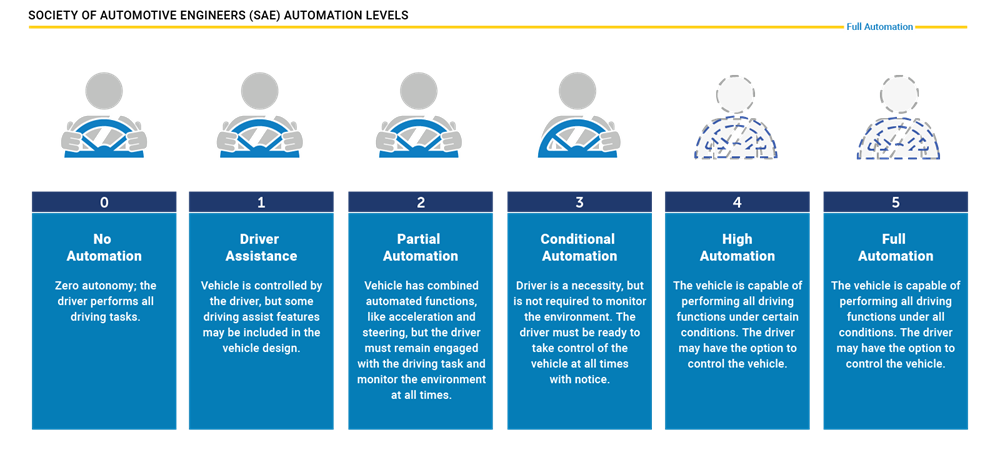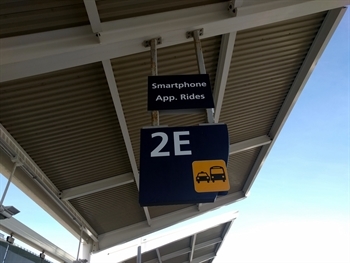What infrastructure do we need for an autonomous future? Our final AV roundtable explored this question.

If you’re plugged in to the world of transportation and infrastructure planning, you’ll know that one topic never ceases to get folks talking: autonomous vehicles (AVs). That conversation has moved into overdrive in the last few years as auto makers include more driver assistance features, and companies like Alphabet and Uber move fully autonomous tech out of the lab and onto the streets. To explore how AV technology will impact northeastern Illinois, MPC partnered with the Environmental Law & Policy Center and the Shared-Use Mobility Center to host a series of three roundtables that approached the subject from several angles. The series concluded on April 5 with a discussion on AVs and the future of infrastructure. We were joined by panelists Shannon Sanders McDonald of Southern Illinois University, Matthew Herman of BuroHappold, and Ben Pierce of HDR. Mary Wisniewski of the Chicago Tribune moderated.

Levels of automation as defined by the SAE. Courtesy of NHTSA. (click to enlarge)
While most discussions feel hypothetical, Shannon said it’s important to remember that automation is a spectrum, and we’re already on it. As defined by the Society of Automotive Engineers (SAE), zero represents no autonomous features at all, and five represents a vehicle that needs no input from humans under any conditions. There are cars on the road today that fall under Level 2, and nearly Level 3. A steadily increasing number of cars feature driver assist technology, Level 1.
According to the National Highway Traffic Safety Association (NHTSA), the potential benefits of automation fall into several overlapping categories: safety, efficiency, and mobility. NHTSA found that 94% of serious crashes are due to human error, so AVs could drastically reduce the number of serious injuries and deaths. A reduction in traffic violence and greater efficiency of movement could translate to economic gains, as people have more time and resources for other pursuits. AVs could also provide independent mobility to the young, the elderly, and those with disabilities. Shannon believes that designing a universally accessible built environment should be one of the key goals for future planners and policy makers.
Moving the conversation into the future, Matthew detailed potential areas of impact. Widespread AV adoption could impact congestion, transit ridership, mobility, land use and even municipal revenue. But whether AVs will make our lives better or worse depends on how the technology is rolled out. To fully realize all the benefits and avoid the pitfalls, Matthew said, AVs must be connected, electric, shared, transit-integrated and equitable. This will require a singular vision across federal (FCC, EPA, DOT), state (IDOT, DMV) and local (CDOT, HUD, Planning) agencies – no small task!
To move us toward the benefits side of the equation, Matthew shared several ideas generated by BuroHappold’s experience working on this topic around the globe (see their report on CAV Global Design Sprints). To efficiently allocate street space, access could become dynamically controlled in two ways. First, different street uses could be allowed at different times. The same lane used as an early-morning loading zone could become a rideshare drop-off during rush hour and a bus lane at midday. Second, demand could be controlled using dynamic pricing. It could cost more to ride alone in a privately-owned AV than to use a vehicle from a shared fleet or, better yet, a self-driving bus. One caveat: pricing must be done with equity in mind.

Airports around the country are already segregating rideshare traffic to specific areas. AV technology could potentially do this dynamically. Cory Doctorow, Flickr.
This kind of real-time response will require a lot of data. We’ll need an enormous capacity to collect, process, and store all of it. And to use it effectively, Matthew said, data must be freely shared between all vehicles no matter the manufacturer. This elicited some security concerns from the audience. When the “internet of things” includes every car, bus, street sign, and square foot of pavement, the number of potential access points into the system increases exponentially. Ben pointed out that, despite some high-profile stories, it’s actually quite difficult to hack a car. Nevertheless, automation brings with it many unanswered safety questions.
Assuming all this technology is safely encrypted, it will also require a lot of power. The roads of tomorrow will need dedicated power lines and fiber optic cables on a whole new scale. That’s where Ben picked things up. He detailed how we should futureproof our roads and bridges. Making sure streets are wired isn’t the only issue. AVs will drive so precisely that most cars will follow the same exact path down the center of a lane. There will be less wheel load distribution and pavement rutting could become a widespread problem. But what happens when there are no lanes at all? When streets are resurfaced today, they’re often left unstriped for some time. In an automated context where vehicles rely on these visual cues, a self-driving car might simply refuse to drive any further.
To create the safest and most efficient environment for AVs, Ben suggested going even further than striping. Today’s signals and signs are built for humans. In the near term, we’ll need to ensure that all signage is machine readable, but we should eventually shift to wirelessly broadcasted traffic safety information. Bridges also offer unique engineering challenges. Since AVs can travel much closer together in narrower lanes, bridge weight requirements may need to be increased. Having every vehicle on a bridge traveling at the same speed and the same distance apart could also create dangerous mechanical resonance (excessive vibration).
There will undoubtedly need to be universal standards in the AV age to ensure that all vehicles can operate safely under all conditions. But there will also be local differences in how AV technologies hit our streets. A dense, older city like Boston or New York has very different transportation needs than Houston, Salt Lake and Phoenix. In space-constrained places where public transit remains the best option to move the most people, AVs may be most effective as a last-mile tool to expand transit’s reach. In places with underdeveloped transit, AVs may offer a totally new mobility option, assuming they’re equitably priced and universally accessible. Culture will also play a role. In places like Chicago, where young people are already looking for an excuse to ditch their cars, a fleet of shared autonomous vehicles will likely have wide appeal. In places where people spend more time driving, automation presents endless possibilities to transform a vehicle’s interior into an extension of the home, a space you’d be reluctant to loan out to a stranger.
Only time will tell how quickly and widely AVs are adopted across the country. Public policy at the national, state and local levels will play a big role. But so will engineers and transportation planners. When designing and building infrastructure today that’s meant to last decades, we should make sure to futureproof for the autonomous revolution as much as possible.
To catch up on the discussion, learn more about our first two roundtables here:
Autonomous Vehicle Fantasy or Nightmare: Cities Can Set the Stage by Jeremy Glover
Driverless Cars: Envisioning the City of the Future by Ellen Partridge